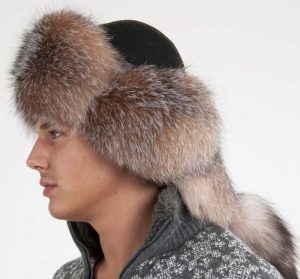




Animal skin/fur has at least two meanings in every traditional culture: a) an attribute of the non-human (zoomorphic), otherworldly world, b) a symbol of wealth, abundance and fertility for the owner. The semantic basis of the fur is based on man’s archaic identification with a sacred animal and his understanding of it as a kind of amulet that can protect against real evil or threats.
Thus, the choice of this or that animal skin for the production of handicrafts (including clothing) depended not only on the properties of the material, but also on the totality of world views. The priority in this hierarchy belongs to the wolf, the symbol of all Turkic peoples, no less valuable were skins of otter (in Kazakh kūndyz, from kūndy “dear”, “precious”). By the way, it can also be beaver, nutria and mink.
The Eurasian peoples associated the otter with the symbolism of water and the underworld; it is a river spirit and assistant of a shaman. The fox (tülki) was also popular, and its fur was used for clothing. From a fox was made a hat with ear flaps, called malaqai. It was considered a sacred headgear, which is not subject to exchange, it can not be twisted, kicking, throwing, etc.
Of special value among the Kazakhs were the skins of qulan, saiga and tiger, furs of sable, raccoon, marten and ermine. A fur coat made of animal skins, especially fox, wolf and otter fur, was an indicator of the owner’s status and ability to pay. The groom’s family considered the giving of a fur coat as a gift to the groom’s parents a sign of special respect. Wearing fur products was also associated with certain taboos. For example, a young zhigit was forbidden to wear fur coats made of wolf fur before the age of 25. It was believed that this would lead to loss of strength or illness.
The special status of wolf fur underscores the Kazakh tradition of hanging animal skins (wolf, fox) on the wall in the most visible place in the house, usually above the carpets.


